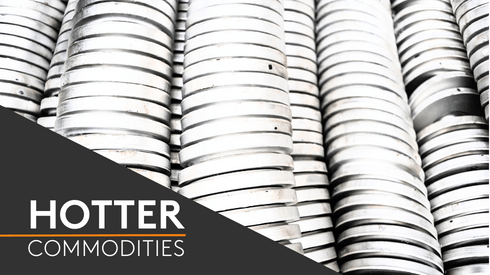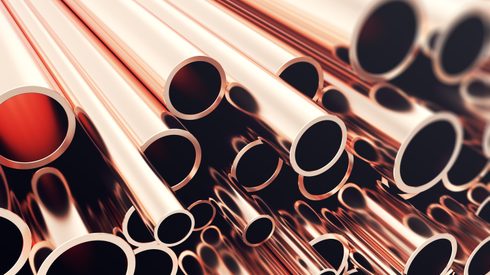Here are five key takeaways from the electric-vehicle and autonomous-vehicle market panel:
Cost and affordability are a significant challenge for electric vehicles
One recurring point was cost. The cost gap is about $12,000 between EVs and internal combustion engine vehicles, Peter LeBlanc, chief marketing officer in North America and vice president of automotive sales at ArcelorMittal, noted during a presentation during the panel, citing data from a Mackenzie research report.
Steel is an affordable solution, in particular advanced high-strength steel (AHSS) and press hardenable steel compared with other materials, he said.
Battery costs are also decreasing, LeBlanc said, adding that by 2023 the cost of batteries will have declined by 86% ($580/kWh) over the past decade, according to Barclays Research.
Cost advantages of steel versus aluminum in EV, AV vehicles
Bernhard Hoffmann, U.S. Steel vice president of engineering global product development, laid out some advantages of the high-tensile strength of AHSS, including compact section sizes, lower mass and optimized packaging space compared with alternative materials.
Body structure weight is highly correlated to a vehicle’s gross weight and size. Historically, steel body structures have been the most cost-effective solution for the vehicle in most segments of the market, according to Hoffman.
“Compared with steel structures of the recent past, from 2002-2015, aluminium offered a reasonable mass savings of 30-35%, at a relatively high but possibly justifiable cost of $6 per kg,” he said.
But advancements in steel technologies since then have narrowed the structural weight gap significantly c ompared with the higher-cost aluminium option. Vehicles launching in 2016-18 using efficient AHSS designs narrowed the gap further versus aluminium to $10 per kg saved.
“With the introduction of the XG3 steel [by U.S. Steel], for the midsize sedan [the] body structure mass difference compared with all the aluminium structures will be reduced to less than 40kg,” Hoffman said.
So the additional cost to use aluminium in the body structure of a vehicle is approximately $650 per vehicle, equivalent to a very high mass-saving premium approaching $16.25 per kg compared with XG3 AHSS designs, he noted.
“With battery costs going down it doesn’t make sense spending more than $2 per kg, which is a trade-off for more battery storage,” Hoffman said during his presentation.
General Motors is already launching new vehicles using U.S. Steel’s 980 XG3 material, including in the Tahoe, Yukon, Yukon XL, Escalade, Escalade ESV and Suburban.
U.S. Steel joint-venture investment in AHSS
Pro-Tec Coating Co, a 50/50 joint venture between Kobe Steel and U.S. Steel, has built a new galvanizing line called CGL3 to increase capabilities for coated AHSS, including XG3 products. The gauge range goes from 0.6-2.6mm and 65in wide.
“The multimillion-dollar investment is operational and going through qualifications for automotive customers,” Hoffman said, adding that U.S. Steel is working with Big River Steel to produce all of the substrate for the Pro-Tec joint venture.
Nucor targeting automotive market with certain projects in North America
Nucor Gallatin is gearing up to boost its annual hot band capacity to approximately 3 million tons from 1.6 million tons and increase maximum coil width to about 73in, Nucor market development and product applications manager Dean Kanelos said.
This is expected to expand Nucor’s presence in the Midwest market – especially in automotive, energy pipe and tube, heavy equipment and the agriculture sectors. The $650-million investment and expected to start in mid-2021.
Nucor Arkansas will be adding a third-generation flexible galvanizing line that will utilize specialty cold mill substrate to produce a wide variety of grades of third-generation AHSS steel. It will have an annual capacity of about 500,000 tons. The $275-million investment expected to start in mid-2021.
Nucor and Japan’s JFE Steel have formed a 50-50 joint venture to supply galvanized sheet steel to the Mexican automotive market, with an annual capacity of about 400,000 tons.
Nucor said it will supply half of substrate requirements, with the facility centrally located to serve Mexico’s automotive market. The $180-million investment started up in the first quarter of 2020. By mid-November, the company will be producing products on this line, Kanelos said.
AK Steel plans for steel’s role in the future of transportation
AK Steel is working next-generation AHSS, high-efficiency electrical steels and new stainless steels with superior corrosion resistance for automotive applications, AK Steel general manager of carbon sales and customer service Dan Gordon said.
Some electrical steel initiatives include HF-10X non-oriented electrical steel in EV motors, along with grain-oriented electrical steel used in manufacturing charging stations.
Gordon noted that Cleveland-Cliffs and AK Steel are moving more toward “greener” steelmaking, which utilizes a lower-carbon natural gas reduction process to reduce carbon dioxide (CO2) emissions while increasing furnace productivity.
Cliffs will soon be shipping hot-briquetted iron (HBI) from its plant in Toledo, Ohio, so blast furnaces and electric-arc furnaces will be “greener,” Gordon said. HBI can be melted more efficiently using less natural gas and coking coal.






